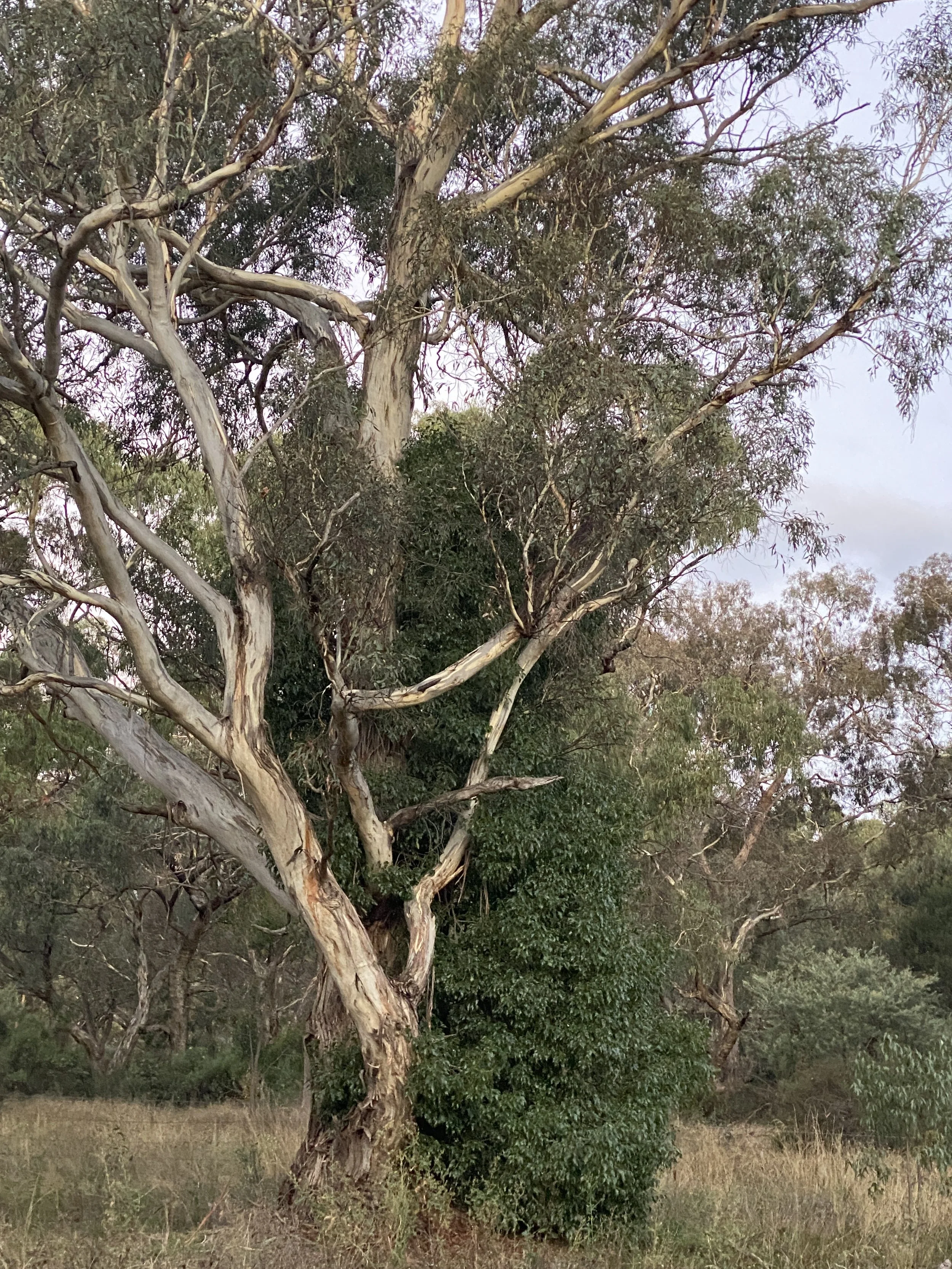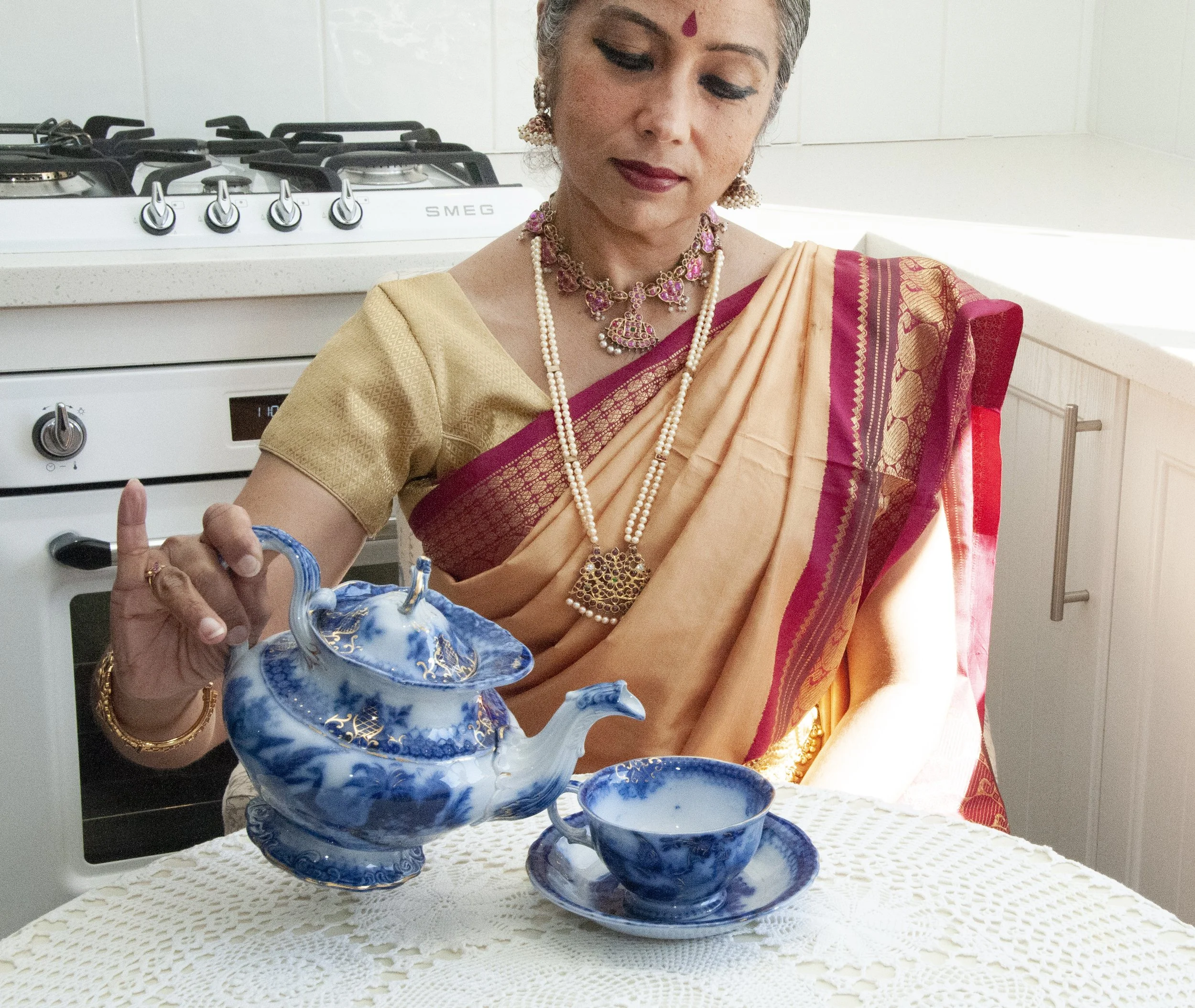On the surface this appears to be a good thing-surely when we find something we like it is okay to keep doing it! The consideration when we are in Rasa philosophy and practice is that we are invited to take care that it does not become a cathartic process. This is why artistic practice as spiritual inquiry was referred to as a razor’s edge path. All of its attributes like pleasure, creativity and sensuality can either bring us to an expansive unity with Consciousness or keep us ever more strongly in our personal narratives.
Read MoreIn our times, the connection to place is challenged every day. We are offered “virtual” spaces as reality, which remove us from material body and place into an immaterial experience. Every event in such realities is information-generated and imposed on our sensorial bodies. Place becomes “virtual” and we float in this ether, untethered to our immediate material sites—our bodies, our home and the tree in our “village”. In such an untethered space, ritual in its fullness of body-led invocation is impossible. And so we atrophy into disconnected and individual experiences.
Read MoreLooking to transform the external is often like changing the cast of the same play—it may transform things marginally but the script is the same old script. The Kshetra invocation of the body is an invitation to turn our offerings towards our consciousness and its divinity. In the very act of this invocation there is radical transformation within and without.
Read More“I do not have time to practice!” How many times have we said that? And this erosion of our days and time becomes more intense when it is a body-led tradition that invites you to recognise your desire/yearning to dance/move rather than follow a “spiritual” routine that is mind-led.
Read MoreThe boar (Varaha, Sukara) is an ancient invocation in many cultures. We find the boar in the 12,000 year old pillars at Gobekli Tepe and amongst the ancient temples and sites in India. The boar invocation is a central practice in Chatushpada or the four-footed or four dimensions of consciousness in body-led spirituality.
Read MoreDance is ephemeral, it is not easily a "product" and this makes it more difficult for us to recognise it as a legitimate manifestation. My sense is that dance underpins everything other manifestation—that sense you have of your movement within you is a signal of this truth. I feel recognising dance as a way of expressing your inner impulses in these times may lead you to other forms eventually...
Read MoreOver centuries of linear, mind-led knowledge systems and spiritual traditions, we have lost the attending to the multi-dimensional nature of reality. In body-led dance inquiry there is a practice called chatushpada which literally means four-footed but which also signals four dimensions of awareness or consciousness. In practice this means holding at least four parts in any encounter with reality which removes a simplistic linear interpretation.
Read MoreThe upside down Ashvatta tree is an ancient invocation of the sacred body that dates back to at least 8-10,000 years in the artefacts from Indus Valley civilisation. In this invocation, the body is experienced as the upside down Ashvatta tree. The enigmatic reversal proposed in this practice is at the heart of body-led spirituality.
Read MoreWhen I was a young philosophy student under my traditional teacher, I remember saying to him one particularly busy week that I did not have time for spiritual contemplation. He asked me what else asked my energy and attention. And I listed many important things—family commitments, work demands, social events and the like. And he gently asked me why I felt that spirituality was separate to “other” priorities. Does that mean that the rest of my life is un-spiritual he asked.
Read MoreNight is an endangered domain in our times! Goddess Ratri, the Goddess of Night, has all but disappeared in our material and spiritual invocations. We celebrate light, light-divinities and lighted gadgets that rob us of sleep. And darkness and Night become dispensable.
Read More









